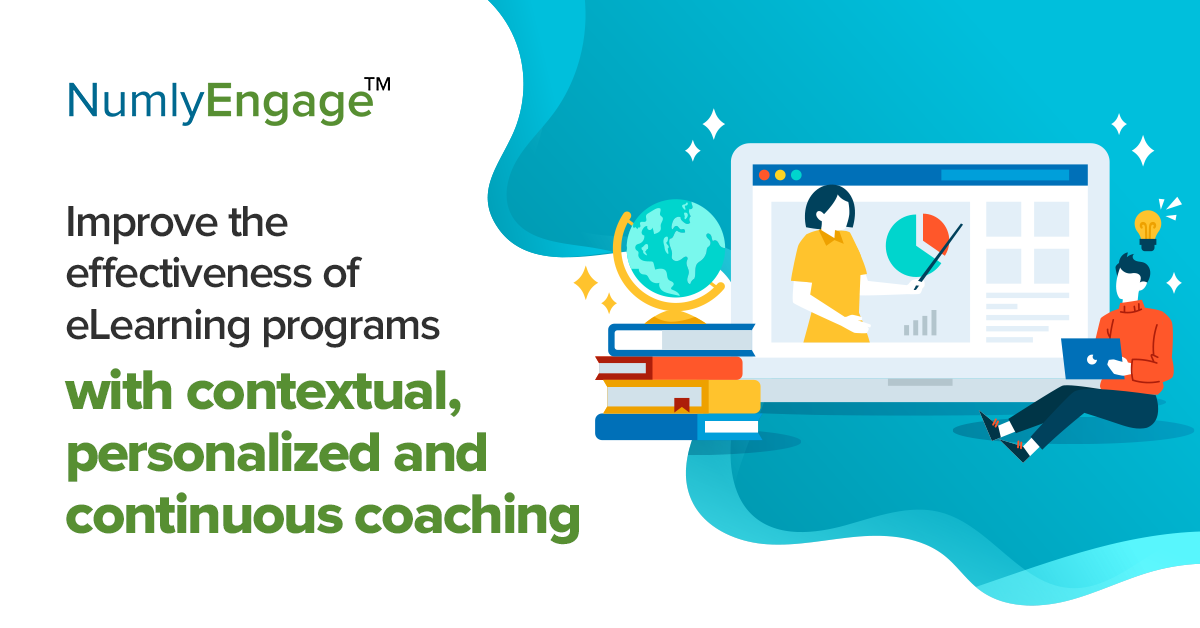Workforce development programs are crucial drivers of employee engagement strategies across organizations.
According to research, 93% of employees are more willing to stay with an organization if it invests in their career development.
The millennials and Gen Z demographic is fast becoming the dominant workforce demographic. One of the key things this generation values is the acquisition of new skills with 87% of millennials citing investments in professional or career growth and development opportunities as key when selecting a job. 91% of the millennials think of their career progression as a top priority.
Clearly, investing in L&D initiatives is non-negotiable, especially as organizations try to get out of the economic slump caused by the COVID-19 pandemic. Increasing their employee skill sets to close the skills gap and increase the digital capabilities of the workforce have become imperative for business success. At the same time, organizations also have to increase their repertoire of critical skills to meet the needs of the Future of Work. Leadership skill development, as you can see, now needs a complete overhaul to help then transition from being a remote boss to a virtual leader. Organizations have to help managers lead teams more efficiently. Building organizational resilience by building employee resilience has become crucial.
These and many such other changes must be introduced in the L&D initiatives to make them relevant for this hybrid workplace of the future. Consequently, organizations also have to approach their L&D budget allocations differently so that the organization can adapt to unexpected changes proactively.
Crafting a tangible “measure of success”
Training budgets increased from $17.7 million in 2019 to $22 million in 2020 for large companies. The total amount spent on training in the U.S in 2020 stood at $82.5 billion. With these numbers at play, making sure of the ROI from training investments becomes imperative for almost all organizations.
To achieve this, it is essential to craft tangible “measures of success”, the parameters that determine the success or failure of learning and development initiatives. Some of the key elements to measure here are:
- Behavioral changes: Measuring whether the training program has brought about the behavioral change in the workplace and evaluate if both individuals and teams are aligned with the organizational values and purpose. Monitoring the relationship between skill development and behavioral change is also essential to increase training efficiency, and improve business metrics
- Organizational impact: Measuring the increase in operational efficiency or organizational outcomes as a result of training. A sales training, for example, should result in sales revenue growth.
- Skill attainment: Measuring the knowledge levels of the employee both pre and post-training. The learners’ knowledge and skill levels must show improvement at the end of training.
- Workplace application: Measuring the extent to which the learner is applying the newfound knowledge and skill in her role to improve outcomes and performance. Skill acquisition without skill application is purposeless in the enterprise narrative
However, to achieve good outcomes from L&D initiatives, it is necessary to closely tie these initiatives to the organizational goals and role-based performance goals and inextricably make L&D a part of the performance management process.
Peer Coaching Drives L&D
Complementing training and skill development initiatives with peer coaching can make L&D initiatives more successful. Peer coaching is a powerful tool to drive team spirit and employee engagement. This becomes more relevant and essential now due to the rise of a hybrid workplace- one that accommodates both remote teams and on-premise teams in tandem.
The rise of the hybrid workplace brings about new challenges – most of which need the workforce to hone, fine-tune and increase the repertoire of their critical skills such as communication, empathy, collaboration, strategic and critical thinking, and the like.
Peer coaching delivers a quantified impact across learning and development initiatives because it:
- Provides a 360-degree view of employee performance: Peer coaching helps employees gain a more holistic view of their performance. Instead of relying only on managers for feedback, peer coaching provides a well-rounded overview of areas of strengths and opportunities for improvement. Peer coaches can give quick and accurate feedback and offer timely advice to accelerate learning and drive accountability.
- Empowers and encourages people to learn new skills: Peer coaching does not adopt an instructional approach like training. It is a deeper relationship, one that is ‘freer’ in nature. This perspective becomes the most defining factor of peer coaching. It is because of the nature of this form of coaching that makes people more attuned and welcome towards learning and skill acquisition. Since peer coaches are people who perform similar job functions as the learner, the conversation becomes more relevant to identify blind spots that training programs can miss. Peer coaching also empowers employees as a peer coach acts as that go-to person with whom they can talk directly and candidly when needed and learn by watching them work.
- Drives behavioral change: Repetition is essential to drive behavioral change. This is where day-long training programs fail on the measurement matrix. Peer coaching is a continuous process and is greatly needed to build critical skills like empathy, active listening, effective feedback, communication, leadership, etc. Since peer coaching highlights reciprocal engagement, it facilitates the joint consideration of the process rather than merely listening to spoken words. This type of coaching helps in building an understanding of the “why” in question and, hence, can bring about a shift in behaviors through constant engagement.
- Increases employee engagement: Peer coaching is also a great tool to build team spirit and camaraderie between employees. It is of valuable assistance when we want to build trust bridges across the organization to bring employees together. This becomes essential especially because hybrid teams, remote teams, and work from home burnout are an everyday reality across organizations.
Peer coaching helps employees build connections across the organization. It can be valuable to drive diversity and inclusion initiatives. It can help new employees migrate from being the ‘outsiders’ to the ‘insiders’ in the organization while helping all build trusted networks that drive career progress. All of these factors contribute heavily towards employee engagement and help build ‘shared purpose’ across the organization.
To make peer coaching outcomes successful, organizations need to design quantitative and qualitative points of measurement.
Quantitative measurement
For this, it is essential to leverage a technology-powered advanced coaching platform that helps organizations:
- Identify the exact skill requirements of the workforce and deliver contextual peer coaching programs
- Assess skill needs, employee strengths, and weaknesses using skill assessment programs. The reliance has to be on data – not guesswork or gut feel
- Use data to make the best coach-learner pairing
- Get evaluation insights from managers as well as colleagues to provide holistic feedback on soft and hard skills
- Get detailed insights from self-scoring, peer rating, coach, and leader feedback both continuously during the coaching and post-completion
- Get post-coaching insights like engagement index of both the team and organization and enterprise insights from rich analytics
Qualitative measurement
Qualitative measurement must complement quantitative measurement. For quantitative measurement, organizations have to look at the non-numerical data and identify the measures of success.
So, how employees respond to peer coaches and coaching, how well they can apply their newly learned skills, how aligned they are to the organization, is there a behavioral change, and whether they are engaged and believe in the organizational purpose, for example, become important points to measure.
It is only when we measure both the qualitative and quantitative parameters that learning and development initiatives can drive a tangible impact on organizational outcomes.
Connect with us to design comprehensive and effective peer coaching strategies and drive them using the power of AI to drive transformational learning and development results.

